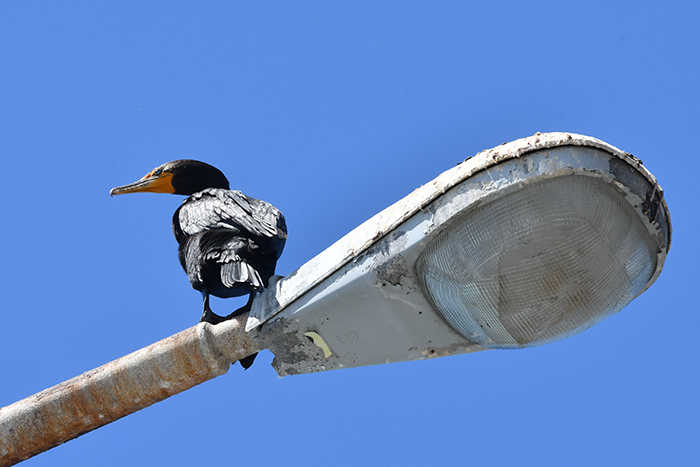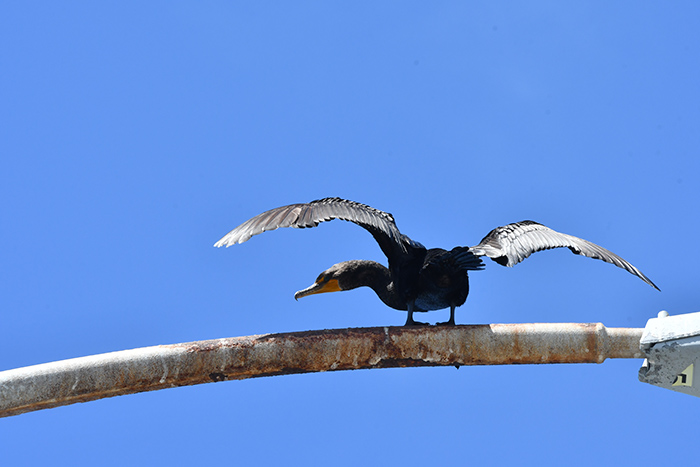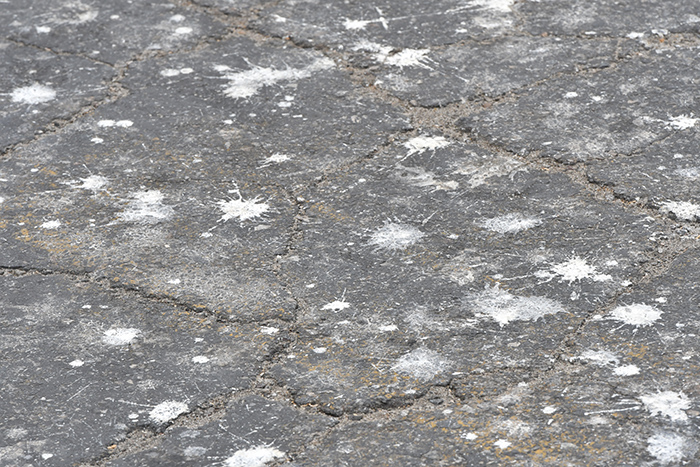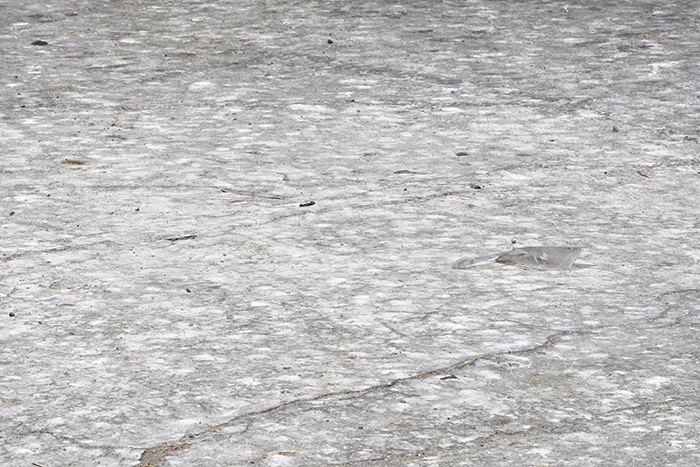
| June 25, 2021 – One can often seea
few double-crested cormorants (Phalacrocorax
auritus, Order Suliformes, Family
Phalacrocoracidae - Cormorants >)
on the light poles in the beach parking lot at
Sunset and PCH. |
 |
 |
| Cormorants are often
seen spreading their wings (1,
2).
Very sophisticated research shows the feathers on
cormorants' wings have a distinctive structure that
makes them "wettable" Wettable feathers allow
them to dive deeper, but may need extra attention to
drying. Thus cormorants likely stretch out
their wings to dry (de-wet) them, but not—as some
believed in the past—because they lack or have an
underdeveloped preening gland (uropygial
gland). The behavior may also help them warm
up, the wings acting as solar panels. See: S. Srinivasan, Shreerang S. Chhatre et al. "Quantification of Feather Structure, Wettability, and Resistance to Liquid Penetration." Journal of the Royal Society, 2014. A. Rijke, W. Jesser. "The Water Penetration and Repellency of Feathers Revisited. Environmental Science, 2011. D.Grémillet, C. Chauvin et al. "Unusual Feather Structure Allows Partial Plumage Wettability in Diving Great Cormorants Phalacrocorax carbo." Journal of Avian Biology, Vol. 36, No. 1 (Jan., 2005), pp. 57-63. A.M. Elowson. "Spread-Wing Postures and the Water-Repellency of Feathers: A Test of Rijke's Hypothesis." The Auk, Vol. 101, 1984. |
 |
 |
| One should be careful about parking one's car below these light poles. allaboutbirds.org notes that, "Accumulated fecal matter below nests can kill the nest trees." |